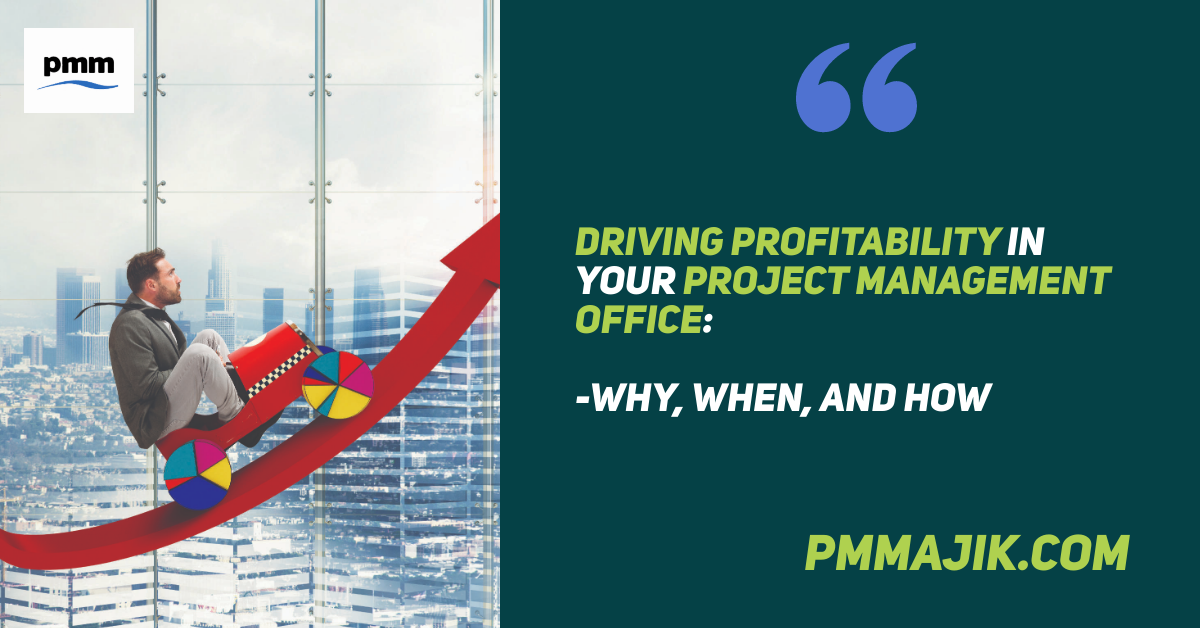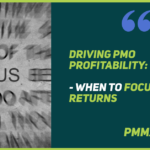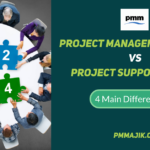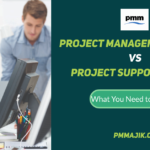In most businesses, a project management office (PMO) is seen as a cost centre rather than a value centre. While it may be accepted that oversight is a business cost, you can still look at driving profitability in your PMO, and here’s the why, when, and how.
It can be challenging to find ways to measure the value your PMO offers. There will be a big initial outlay in time and resources before the business may see a return on your activities, but profitability is a good end result to aim for.
To help you get to grips with how to become a profit centre and increase that value, we’re going to look at:
- Why it’s important to look at the profitability of your PMO
- At what stage in your PMO lifecycle you should start to see profit
- How you can push your PMO to become increasingly profitable
With a deeper dive into these topics in coming blogs.
Does a PMO need to be profitable?
A profitable PMO is less likely to be closed down, which is a long-term concern for any office. While the money your office brings to the business isn’t the only measure of success, a profitable PMO has a strong business case.
Of course, there will be some projects and programmes where profit isn’t the motive, for example, in government contracts. That being said, most PMOs will be in a business that wants to reduce costs and drive profits.
It will depend on the strategic goals of the wider business and whether you want to push for profitability. You will need to agree with your PMO sponsor and other stakeholders on how you will measure profits since the office isn’t responsible directly for sales.
When will a PMO be profitable?
A PMO requires a lot of investment to get started and to develop. You will need to spend money on lots of elements, such as:
- Setting up your technology stack
- Training your team to the level you want
- Labour costs to develop frameworks and documentation
- Developing processes and procedures
While some of this activity can bear fruit quickly, it will take time to gain project competencies across the business.
You should start to see a transition from a cost centre to a profit centre as your PMO reaches maturity. Your initial investments should improve processes and project delivery to the extent that projects are more profitable for the business. This is a key measure of your success.
How can I drive profitability in my PMO?
Driving profitability will come from your work helping projects to reduce costs and streamline processes. This may sound simple, but there is more to it.
First, you need to consider the type of PMO you’re running – this will impact on your ability to drive profits. For example:
- An enterprise PMO is business focused and should be looking at business goals like profit
- A delivery PMO works to improve the end results of a project, which should include profits
- A directive PMO looks after the resources for projects and has the opportunity to control cost
If you set profits as a goal of your PMO, you need to make sure that you start with the right model or plan to transition your style as you become a sustainable PMO.
Once you have the right type of PMO to drive profit, you need to make sure your PMO works on:
- Centralising and harmonising standards, compliance, and governance across projects to remove duplication of effort
- Reducing project costs by efficiently allocating resources and reducing waste with better planning
- Increasing capacity for the business to complete more projects, returning billable hours to the business
We’ll look at how to achieve this in more detail in the next weeks.
Make your PMO profitable
Profit is a driver for most businesses, and you should aim for your PMO to contribute towards that. Knowing how to drive profitability for your PMO with the why, when, and how is a good starting point.






